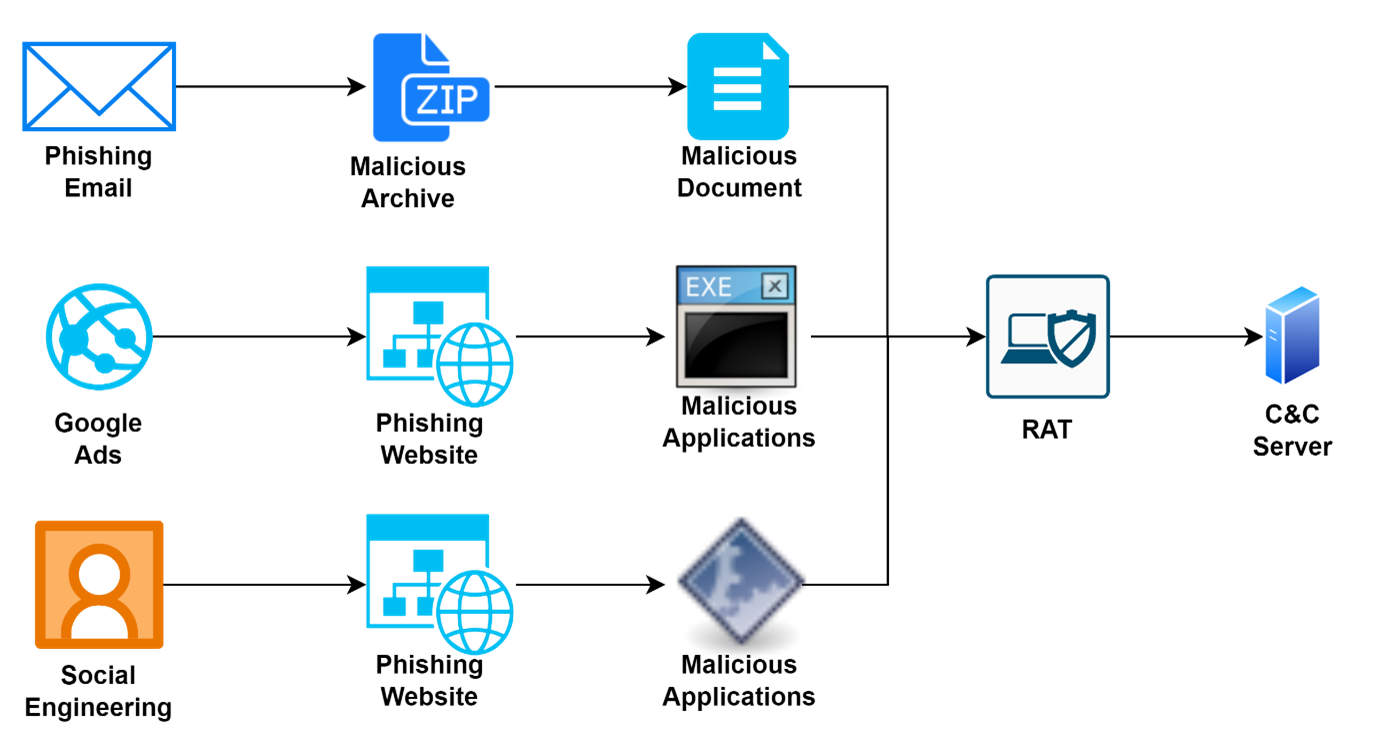Fake Sites, Custom Malware: TransparentTribe’s Deception Exposed

In the intricate world of cyber espionage, certain threat actors distinguish themselves through their sophisticated tactics and strategic targeting. TransparentTribe, also known under aliases such as APT 36, ProjectM, and Mythic Leopard, is one such group that has consistently demonstrated a high degree of sophistication and persistence. A recent report by Cyble Research and Intelligence Labs sheds light on this formidable threat, particularly highlighting its focus on Indian governmental organizations, military personnel, and defense contractors.

TransparentTribe APT Lifecycle | Image: CRIL
Strategic Focus and Methodologies
TransparentTribe is primarily known for targeting entities in India and Afghanistan, although their activities have spanned across continents, affecting nations including the USA, UK, Germany, and Canada, among others. The group’s objective is clear: to gather sensitive information, conduct cyber espionage, and compromise the security of its targets.
Exploitation Across Platforms
This APT group adeptly navigates and exploits various platforms, notably Windows and Android. They employ deceptive tactics, such as creating fake websites and documents that mimic legitimate government resources. This cunning approach can trick targeted individuals into divulging credentials or inadvertently downloading malware onto their systems.
Custom-Developed Malware
One of the most alarming tools in TransparentTribe’s arsenal is the Crimson RAT (Remote Access Trojan), a custom-developed malware designed for cyber espionage. This malicious software is just a part of a broader toolkit that enables them to maintain persistence on infected systems, perform data exfiltration, and remotely manipulate compromised devices.
Lifecycle of an Attack
TransparentTribe employs a calculated approach to its operations, which begins with meticulous reconnaissance and the development of resources tailored to its targets. Their tactics include:
- Phishing and Malvertising: The group leverages phishing emails and Google Ads to direct users to malicious sites or prompt downloads of infected files.
- Social Engineering: Utilizing fake personas and platforms like YouTube, the group engages in social engineering to further their malicious intents.
- Execution and Persistence: Once initial access is gained, TransparentTribe deploys various techniques to maintain presence within the infected systems.
Technical Insight into Infection Techniques
The initial infection vectors used by TransparentTribe are diverse, including malicious document files, phishing websites, and direct deliveries of malicious executables. The group’s strategy involves:
- Phishing: Targeting specific individuals with customized bait, often using services hosted by entities like Contabo GmbH to mask their operations.
- Malicious Files: Employing files that exploit vulnerabilities such as CVE-2012-0158 and CVE-2010-3333 to deliver payloads.
- Android Applications: Crafting applications that request extensive permissions, allowing for a broad range of RAT operations on mobile devices.
Toolset Diversity
TransparentTribe’s toolkit is vast, featuring a range of RATs and other malicious software including DarkComet, QuasarRAT, and the bespoke Crimson RAT. These tools facilitate a broad spectrum of nefarious activities from keylogging to complete system control.
Countermeasures and Recommendations
Given the severity and sophistication of the threats posed by TransparentTribe, it is critical for organizations, especially those within targeted sectors, to adopt comprehensive cybersecurity measures. Recommendations include:
- Enhanced User Education: Regular training to recognize phishing and other social engineering tactics.
- Robust Security Protocols: Implementation of multi-factor authentication (MFA), regular software updates, and robust antivirus defenses.
- Incident Response Planning: Developing and regularly updating an incident response plan to quickly and effectively address any breaches.
Conclusion
TransparentTribe’s activities represent a significant threat to national security and corporate integrity in the targeted regions. Understanding their methodologies and continuously adapting cybersecurity practices is essential for government agencies and corporations to safeguard their sensitive information.





